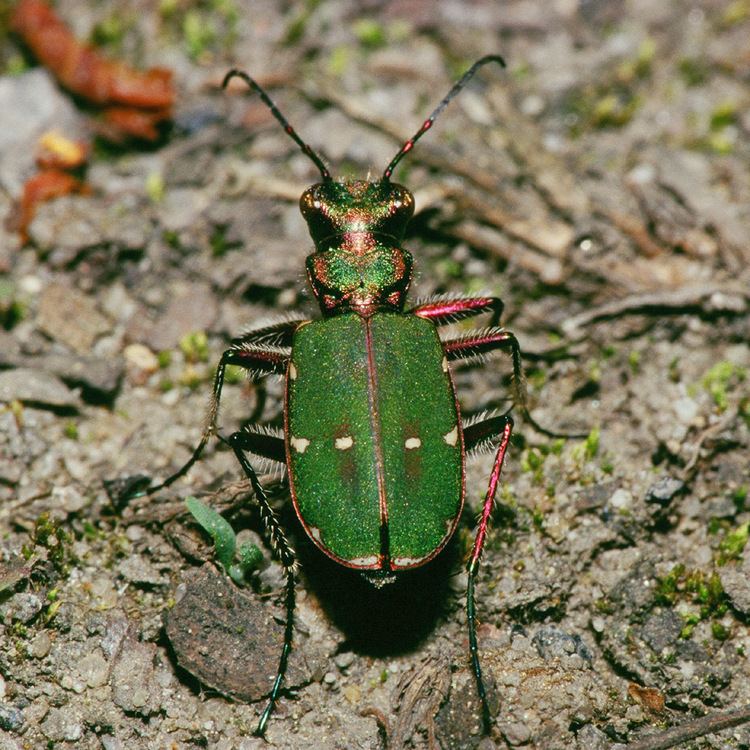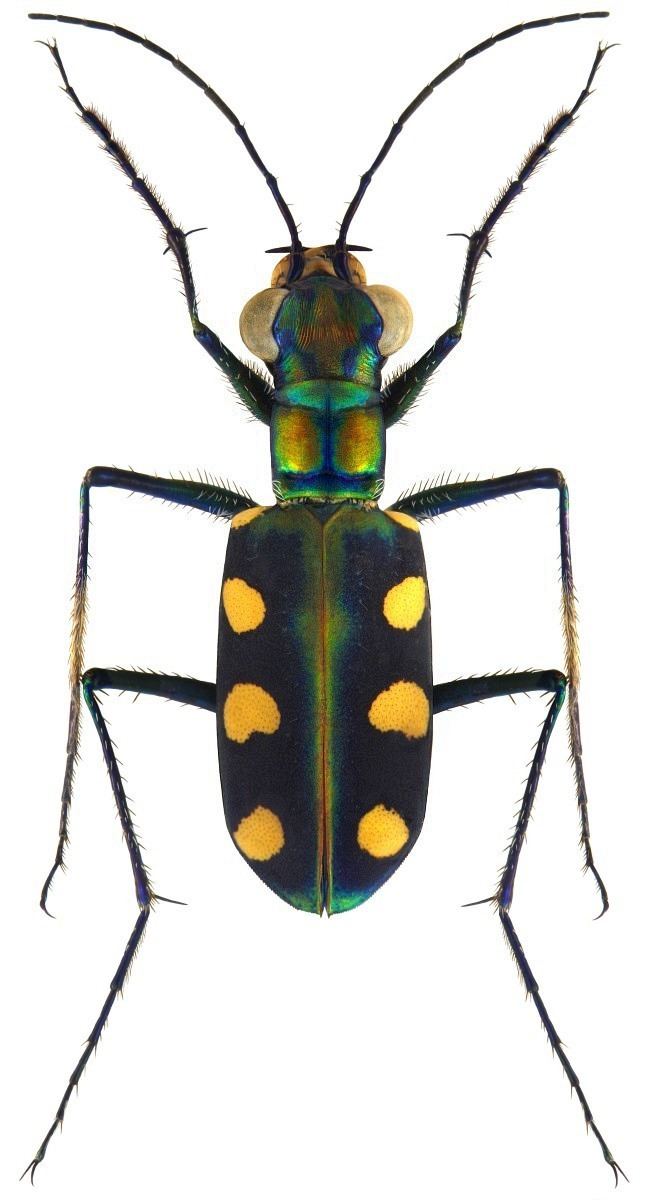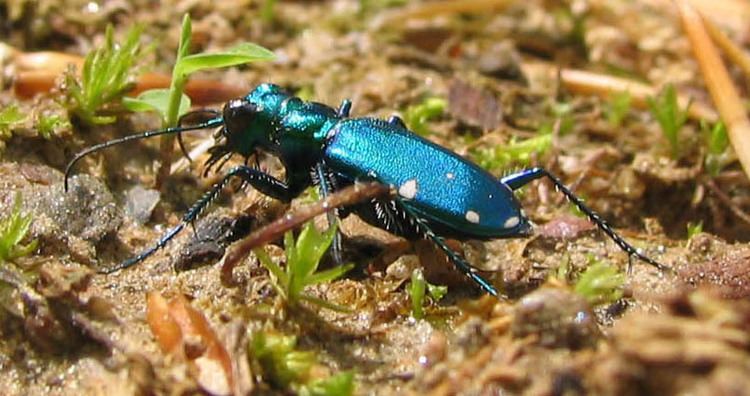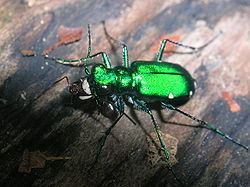Order Coleoptera Family Carabidae Scientific name Cicindela Rank Genus | Suborder Adephaga Subfamily Cicindelinae Higher classification Tiger beetle | |
 | ||
Lower classifications Cicindela campestris, Cicindela sexguttata, Cicindela hybrida, Cicindela chinensis japonica, Cicindela maritima | ||
Cicindela sexguttata six spotted tiger beetle
Cicindela, commonly known as common tiger beetles are generally brightly colored and metallic beetles, often with some sort of patterning of ivory or cream-colored markings. They are most abundant and diverse in habitats with sandy soil (though some prefer clay), and very often near bodies of water, even if seasonally transient; along river, sea and lake shores, on sand dunes, around playa lakebeds and on clay banks or woodland paths.
Contents
- Cicindela sexguttata six spotted tiger beetle
- Cicindela formosa formosa larva digging burrow
- Etymology
- Systematics
- References
Cicindela formosa formosa larva digging burrow
Etymology

The word "Cicindela" comes from the Latin word "cicindela", meaning "glowworm". This comes from the fact that members of the genus Cicindela are metallic and sometimes flashing.
Systematics

The genus Cicindela is (in its broadest historical sense) the largest genus of tiger beetles, and they occur worldwide. The status of the genus is constantly in a state of flux, as various authorities on different continents have vastly different opinions about which (if any) of the dozens of subgenera traditionally recognized within the genus are deserving of being accorded status as independent genera. Moreover, this is one of the few insect taxa in which the rank of subspecies has traditionally been used repeatedly, and essentially no two classifications consistently treat the various members of the genus as to which are species and which are subspecies.

Treated as a single genus, and even with a fairly conservative estimate of species, there are over 850 (or even up to 2,300) species in the group (thus being almost equal to the subtribe Cicindelina (W.Horn, 1908), with several thousand published names applied, collectively. Currently most of the subgenera below are in fierce dispute, being considered genera of their own by some, and subgenera of the genus Cicindela by others. The genus is divided into the following subgenera:


For a list of species, see List of Cicindela species. The subgenus Cicindela (Cicindela), or Cicindela sensu stricto contains the following species:
Cicindela elegans Fourcroy & Geoffroy, 1785 is a synonym for Cephalota elegans, a species found in Russia.
Cicindela elegans Dej. (described as "Cicindela elegans Dej. Spec I. 144. 123. De Java . Coll . de M. Payen" by Pierre Léonard Vander Linden in 1829 refers to a species found in Java. The description given by Dejean is
"C. Versicolor Mac Leay. Annulosa Javanica. I. p. 11. n°7." , whereas that given by Macleay is
"7. VERSICOLOR. C. atrocaeruleus thorace bis constricto elytris atris, apice violaceis; margine maculis tribus viridiaeneis.
Long. corp. 5/16 +
Insectum nitidum generi praecedenti proximum. Caput atrocaeruleum rugis striatum fronte depresso oculis magnis prominentibus. Labrum viride. Mandibulae testaceae apice nifrae. Pulpi testacei articulis duobus ultimis viridibus. Antennae nigrae basi caerulae. Thorax THERATIS latere posticéque viridis. Elytra trimaculata maculis viridibus marginalibus; humerali elongata posticé, media transversa, posticaque triangulari. Corpus subtus caeruleum. Pedes atrocaerulei.".
